Discover 11 hidden attractions, cool sights, and unusual things to do in Merano (Italy). Don't miss out on these must-see attractions: Trauttmansdorff Castle Gardens, St. Nicholas' Church, and Trauttmansdorff Castle. Also, be sure to include Steinerner Steg in your itinerary.
Below, you can find the list of the most amazing places you should visit in Merano (Trentino-South Tyrol).
Table of Contents
Trauttmansdorff Castle Gardens

Also known as: Orto botanico di Merano
Castle gardens, with mountain views. The Gardens of Trauttmansdorff Castle are botanical gardens located on the grounds of Trauttmansdorff Castle in Meran, Italy. The gardens are open daily in the warmer months; an admission fee is charged.[1]
Address: Via San Valentino 51/A, 39012 Merano
St. Nicholas' Church

Also known as: Chiesa di San Nicolò
Parish church in Merano, Italy. The St. Nicholas' Church is the parish church of the town of Merano in South Tyrol, northern Italy.
The church is dedicated to Saint Nicholas, the patron saint of the town. It is located at the end of the Laubengasse in the old town centre between the Domplatz and Pfarrplatz. It was first mentioned in 1220 and was expanded over time in the 14th century before taking its final shape in the year 1465. The architectural style is mainly Gothic.
The church consists of three naves. It has well-preserved stained glass windows, and a large rose window over a pointed arched portal, a number of wooden sculptures of saints and paintings that date from different periods. Of particular importance is the large altar and pulpit.
Outside is a tall clock tower with a sundial. Old tombstones line the walls and various paintings from the life of Jesus Christ.
Behind the church is St. Barbara's Chapel.[2]
Address: Vicolo Passiria 3, 39012 Merano
Trauttmansdorff Castle
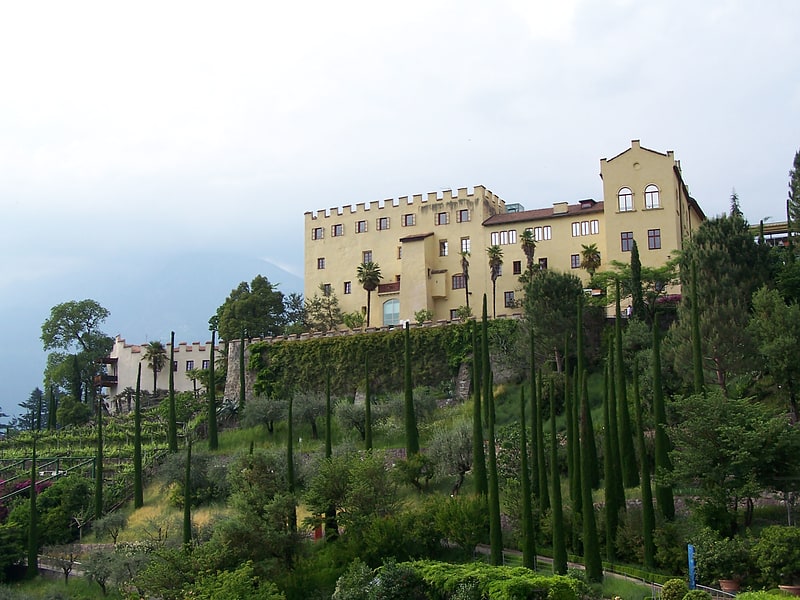
Also known as: Castel Trauttmansdorff
Castle with a museum and scenic gardens. Trauttmansdorff Castle is a castle located south of the city of Meran, South Tyrol, northern Italy. It is home to the Touriseum, a museum of tourism and since 2001 the surrounding grounds have been open as the Trauttmansdorff Castle Gardens, a botanical garden.
During the years of fascist Italy the castle was called di Nova Castle (Torrente Nova is the name of a little brook near Trauttmansdorff).[3]
Address: St-Valentin-Str. 51A, 39012 Merano
Steinerner Steg
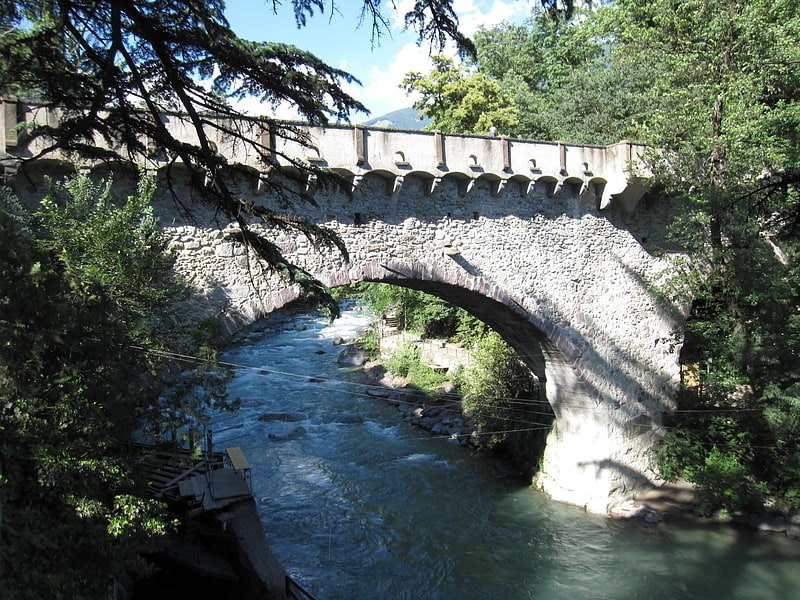
Also known as: Ponte Romano
Footbridge in Merano, Italy. The Steinerner Steg is a two-arched, stone-built footbridge across the Passer in Merano, South Tyrol, northern Italy. The oldest bridge in the town, it connects the historic centre and the Steinach district with the Obermais quarter.
In 1615 the wooden aqueduct which spanned the river here had fallen into disrepair and the town decided to demolish it and build a stone bridge in its place. The following year Andrä Tanner, an architect from Brixen, was contracted to build the replacement. Scarcely had the works been completed, however, when the new bridge was washed away in a flood. The current structure was completed in 1617. The bridge is in close proximity to the Passeirer Tor, one of the town gates of Merano.[4]
Palais Mamming
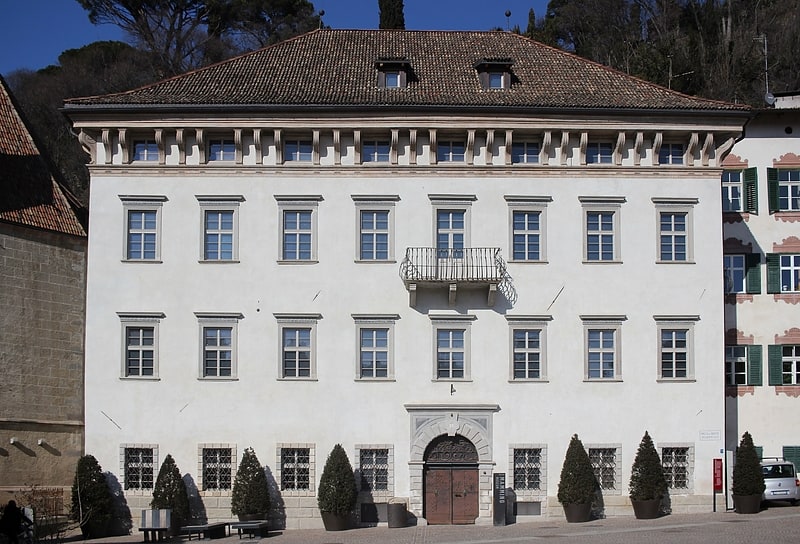
Museum in Merano, Italy. The Palais Mamming Museum is the city museum of Meran, South Tyrol.[5]
Address: Pfarrplatz 6, 39012 Merano
Tappeinerweg Trail
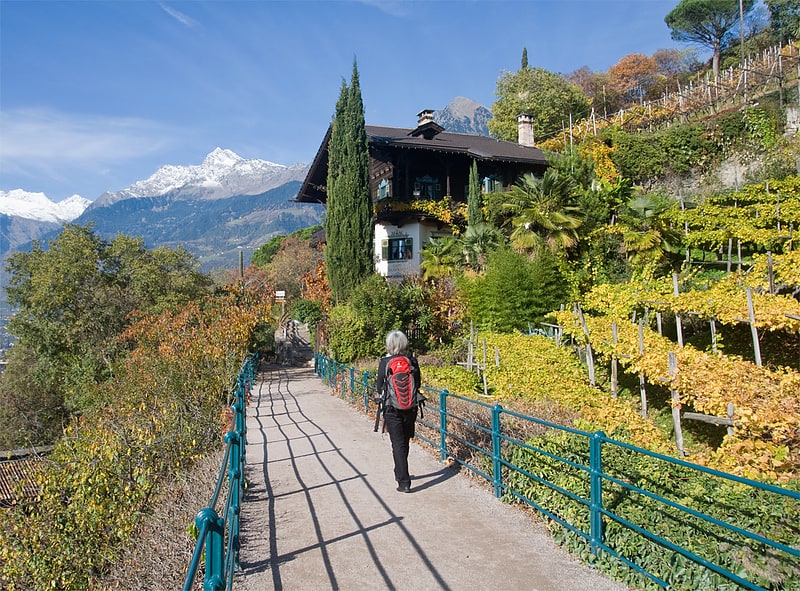
The Tappeiner promenade is an approximately 6-kilometer-long footpath at the South Tyrolean city of Merano and the neighboring municipality of Tirolo. The promenade runs along Mount Benedict from Quarazze in the west to castel San Zeno in the east, where it ends near the Ortenstein powder tower. The path is mostly horizontal, in a panoramic position about 100 meters above the town for a total length of 4 kilometers. The varied vegetation is mostly Mediterranean species.
From Merano one can ascend to the promenade via many different routes.
Women's Museum Meran
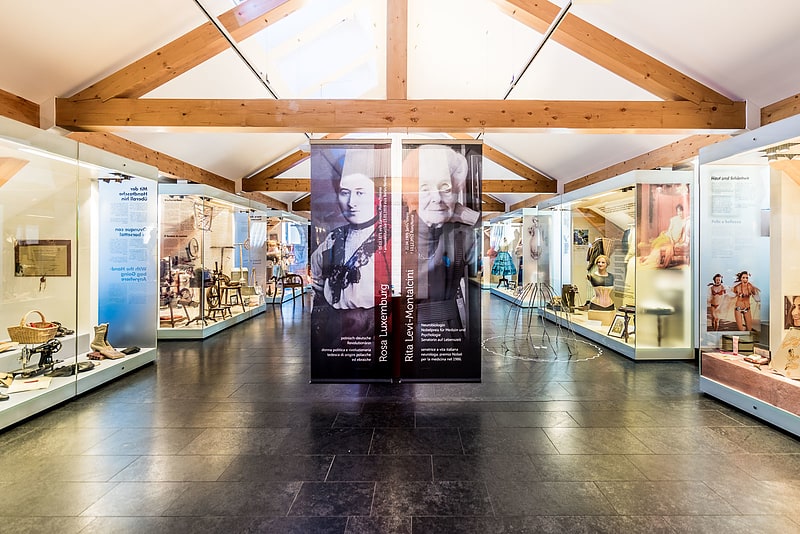
Also known as: Museo delle Donne
Museum in Merano, Italy. The Women's Museum Meran is located in a former convent of the Poor Clares in the centre of Meran. It is administrated by an association and is also the registration office of the International Association of Women's Museums.[6]
St. Barbara's Chapel
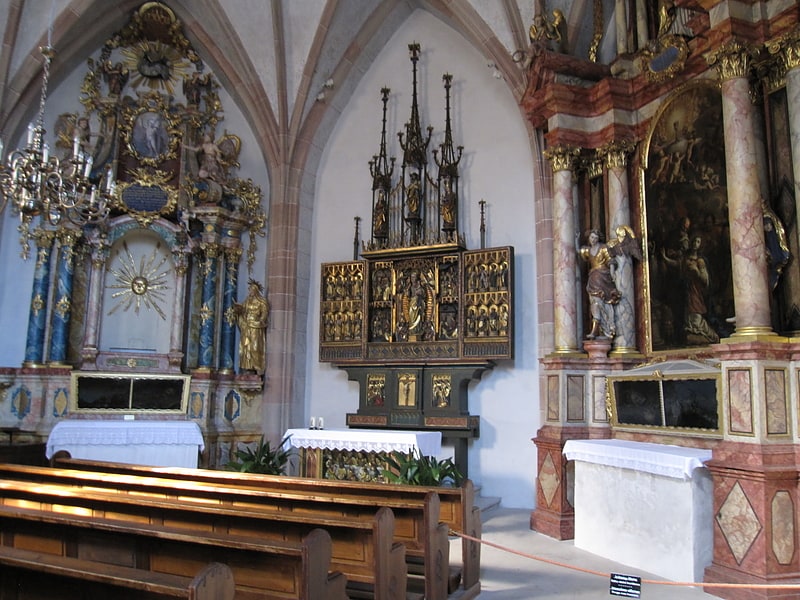
Also known as: Cappella di Santa Barbara
Chapel in Merano, Italy. The St. Barbara's Chapel is a chapel located in the town of Merano in South Tyrol, northern Italy.
The chapel stands right behind the St. Nicholas' Church, Merano. The layout of the chapel is octagonal. It was built by the architect Hans von Burghausen in 1450, who also designed the Hospital Church.
The chapel served as the burial chapel of the town for many centuries until the cemetery was moved to another location in 1848.
The basement served as the ossuary while the main floor was used for religious ceremonies and prayers. It features a number of wooden pews and a wooden Gothic altar, flanked by two altars from the Baroque period. Outside the entrance has a painting depicting Saint Christopher.[7]
Stadttheater Meran

Also known as: Teatro Civico
Theatre in Merano, Italy. The Stadttheater Meran is the civic theatre of the town of Meran in South Tyrol, northern Italy.
With the economic and financial development of the city as a spa for Empress Elisabeth of Austria and the aristocracy, the need for a higher cultural institution rose. The architect Martin Dülfer, who was a representative of the Munich School of Architecture, was given the commission to build the new theatre. He designed the theatre in the Jugendstil. It was completed in 1899 and inaugurated on December 1, 1900.
After the annexation of the town following the end of World War I from Austria-Hungary to Italy was the theatre renamed by the Italians after Giacomo Puccini, who visited the town in 1923. The theatre saw its decline after World War II and the 1950s. It was, however, revived again and renovated after a fire in 1978.[8]
Schloss Rametz
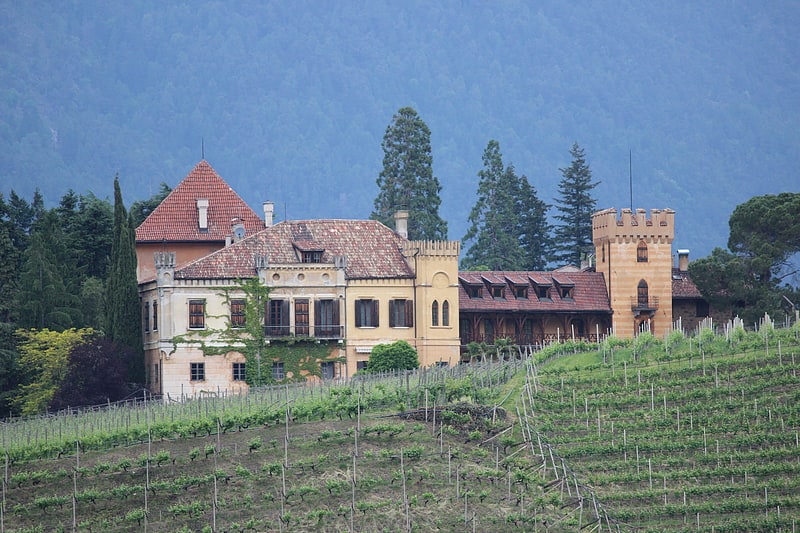
Rametz Castle is a manor house of medieval origin located in Maia Alta in the municipality of Merano.
The first historical records concerning the castle date back to 1269, when it was first mentioned in written documents. Between the 14th and 15th centuries it was owned by the Rametz family, then passed to the Aichners, then to the Forty, the Planta, the Travers and the Parravicini.
In 1836 it was purchased by Francesco Flarer, a professor at the University of Pavia, whose daughter married Agostino Depretis. He turned it into his own residence, carrying out a radical restoration that brought the castle to its present appearance, characterized by turrets and Ghibelline battlements.
During World War II it was requisitioned by German troops along with Castel Labers and used as a logistics base for Operation Bernhard.
In 1954 the Austrian writer Fritz von Herzmanovsky-Orlando died there.
It is currently home to a renowned winery with a restaurant and a small wine museum housed in the rooms of the castle, especially Pinot. The rest of the manor house cannot normally be visited.
Address: Via Labers, 4, 39012 Merano
Landesfürstliche Burg
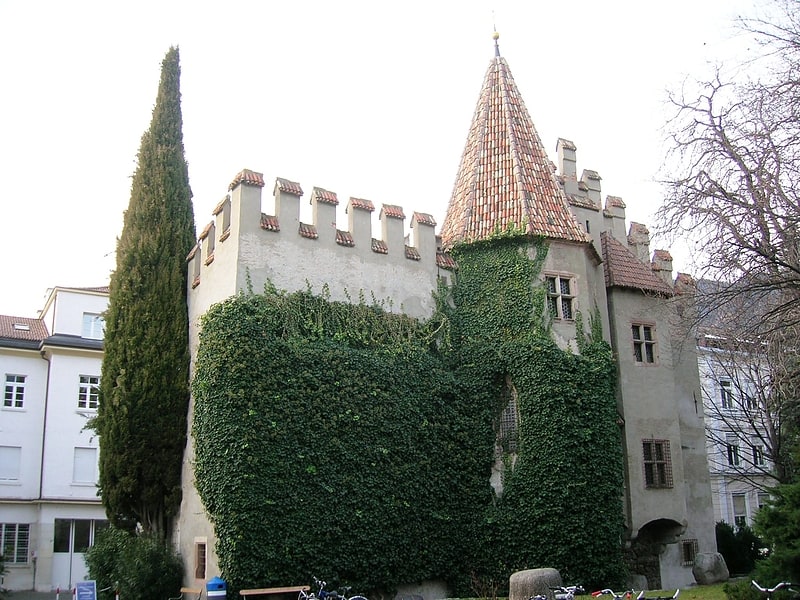
The Princely Castle is a castle located in the historic center of Merano: throughout its history it has always been used as a dwelling, until it became a small museum center.